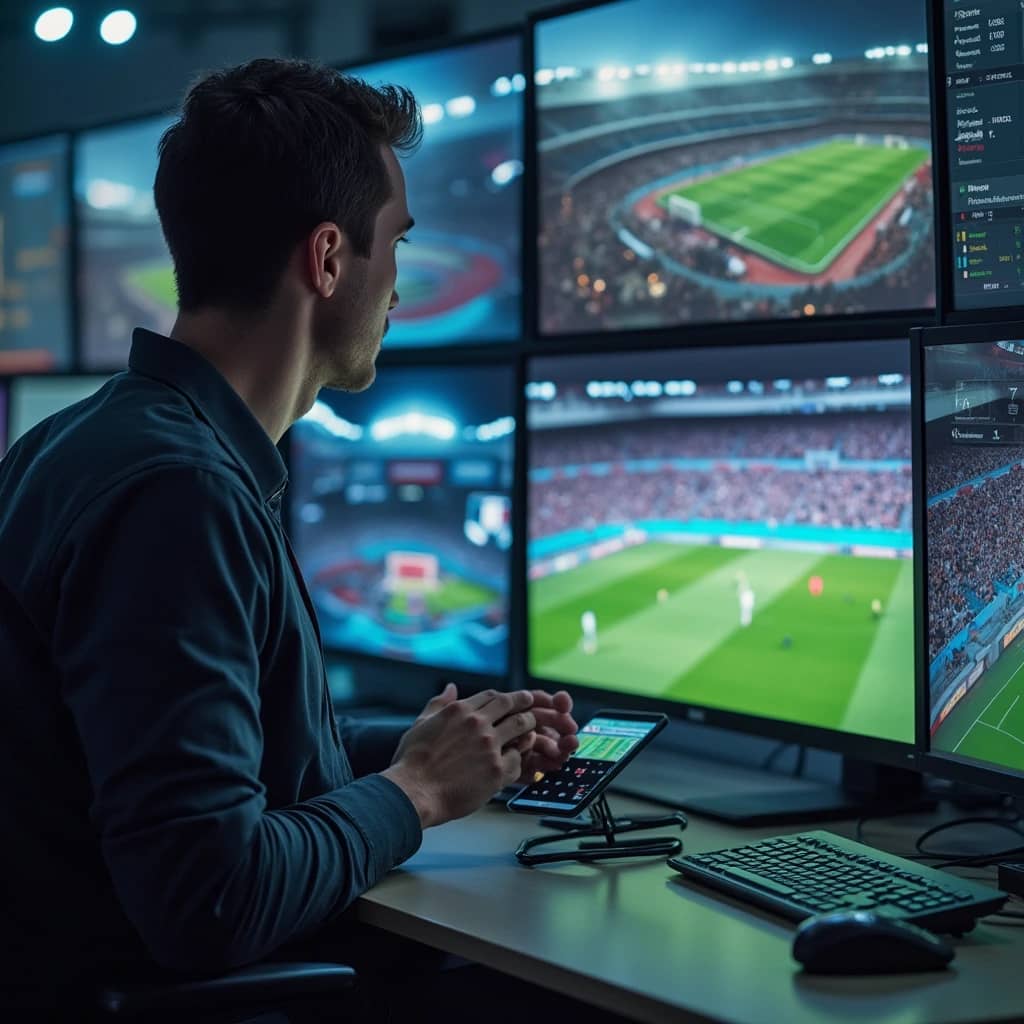Video Assistant Referee (VAR) technology has brought a seismic shift to the world of football since its introduction in high-profile leagues. Designed to assist referees with critical decisions, VAR aims to enhance the accuracy of officiating and, ultimately, the fairness of the game. This article delves into the evolution, implementation, benefits, challenges, and future of VAR technology in football.
1. The Evolution of VAR
The origins of VAR date back to 2012 when the concept was first discussed during an International Football Association Board (IFAB) meeting. However, it wasn’t until the 2016-2017 season that VAR was trialed in various leagues globally, including the 2018 FIFA World Cup. The system has been used to review four key types of incidents:
- Goals: Checking for offside or fouls in the buildup to a goal.
- Penalty Decisions: Assisting referees in awarding or overturning penalties.
- Direct Red Card Incidents: Reviewing situations that may warrant a red card.
- Mistaken Identity: Correcting situations where the referee penalizes the wrong player.
Initially met with skepticism by players, fans, and pundits alike, the growing use of VAR has sparked debates about its impact on the game.
2. Implementation of VAR
In practice, VAR involves a team of video assistant referees who have access to multiple camera angles and replays. During a match, the on-field referee can refer to VAR for assistance or may be prompted to review an incident based on the VAR team’s recommendations. When a review is needed, the referee goes to a pitchside monitor to assess the incident firsthand.
VAR technology relies heavily on sophisticated equipment and software to ensure clarity and accuracy. Dedicated replay rooms are equipped with advanced technology that allows officials to analyze incidents in real-time, which improves decision-making efficiency.
3. Benefits of VAR
The primary aim of VAR is to improve the accuracy of decisions in football, thus enhancing the overall fairness of the game. Here are some of the notable benefits:
- Accuracy: VAR aims to correct clear and obvious mistakes, reducing the margin of error in critical match situations. Studies have shown that the accuracy of refereeing decisions has improved significantly with VAR.
- Consistency: By providing a standardized review process, VAR promotes consistent decision-making across matches. This consistency helps ensure that similar incidents are treated similarly regardless of the teams involved.
- Game Integrity: VAR can help uphold the integrity of the sport by addressing unfair advantages. For example, a wrongly awarded penalty or an offside goal can significantly impact match outcomes, and VAR serves to rectify such errors.
- Spectator Experience: VAR has the potential to increase the excitement around critical match moments. When a close goal is scored or a penalty is awarded, the dramatic pause as VAR reviews the decision adds an element of suspense for fans.
4. Challenges and Controversies
Despite its potential benefits, VAR has faced significant criticism since its implementation. Key challenges include:
- Delays: One of the most significant criticisms concerns the time taken for reviews. Critics argue that lengthy stoppages disrupt the flow of the game, leading to frustration among players and fans. While the aim is to reduce errors, the method of doing so has drawn criticism for its impact on match pacing.
- Subjectivity: While VAR is meant to eliminate subjective decision-making, certain incidents can still be open to interpretation. The definition of a “clear and obvious error” can vary among referees, leading to inconsistent applications of the rules.
- Fan Engagement: Fans often have limited visibility into the VAR process, leading to confusion and discontent. The lack of transparency during reviews can diminish the spectator experience, as fans may not understand the rationale behind certain decisions.
- Emotional Impact: The emotional rollercoaster of a team scoring only to see the goal overturned by VAR has led to accusations that VAR detracts from the traditional thrill of football. The technology, while meant to enhance fairness, can also amplify feelings of disappointment or outrage among fans and players alike.
5. The Future of VAR in Football
As VAR technology continues to evolve, leagues and governing bodies are working to address the challenges it poses. Efforts include:
- Greater Transparency: Enhancing communication with fans, such as explaining VAR decisions through stadium screens or broadcasts, can help foster understanding and acceptance.
- Refinement of Protocols: Ongoing discussions within IFAB and domestic leagues aim to refine the processes governing VAR usage, potentially instituting time limits for reviews and providing clearer guidelines on subjective decisions.
- Technological Advancements: Future developments may lead to the integration of even more advanced technology. For example, advancements such as semi-automated offside technology could reduce the time taken for reviews and enhance accuracy.
- Cultural Acceptance: As leagues become more accustomed to VAR, the cultural shift towards embracing technology in officiating may continue to grow, leading to smoother integration into the fabric of the game.
Conclusion
VAR technology represents a significant leap forward in football officiating, with the potential to enhance fairness and accuracy in the sport. While it has faced challenges and criticism, the dialogue surrounding its implementation highlights the balancing act of preserving the essence of the game while embracing modernization.
As football continues to evolve, VAR will play a pivotal role in shaping the future of officiating. By addressing its shortcomings and refining the system, football can ensure that the beautiful game remains as fair and exciting as possible for players and fans alike. ⚽💻



